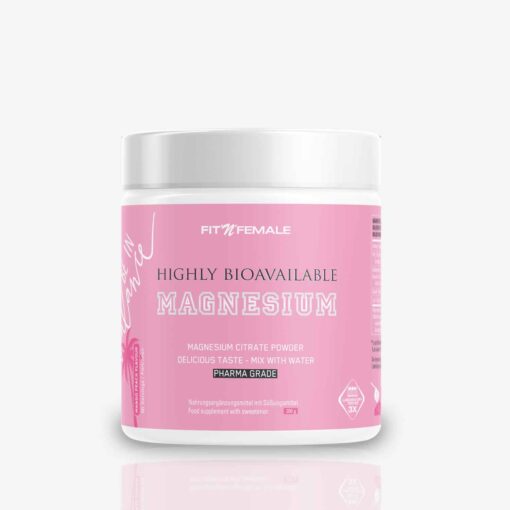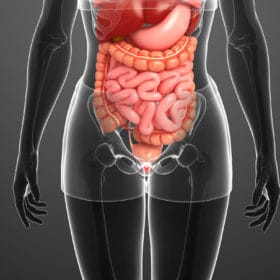Anyone who has really pushed themselves to the limit during sport will certainly feel every single muscle the next day. We are, of course, talking about good old sore muscles. But even today there are still countless myths and legends surrounding this phenomenon.
Tales of over-acidified muscles or the necessity of muscle soreness for muscle growth still haunt the world - and unfortunately also many a "specialist magazine". Reason enough to find out what this is really all about. You will also find out the best way to deal with sore muscles and even prevent the unpleasant burning sensation to a certain extent.
What is muscle soreness anyway?
The classic pain in the muscles, which you usually feel 12 to 24 hours after exercise, has its origin in the strain on the muscles. The cause is always an unaccustomed strain in terms of duration, intensity or type of strain.
People who are just starting out with sport, trying out a new sport or learning a new movement pattern during training are particularly likely to suffer from this phenomenon. Basically, it is an overloading of the muscle fibers. This results in microscopic tears in the microstructures of the muscle fibers.
These tears fill with fluid over time, causing painful swelling that extends into the connective tissue. Incidentally, sports scientists have already discovered that eccentric strain (releasing a weight) is more likely to lead to muscle soreness than concentric muscle strain (lifting a weight).
Contrary to what has long been assumed, muscle pain and stiffness have nothing to do with over-acidification during training. Acidosis as a trigger is therefore off the table and nothing more than a myth.
Is training progress only possible with sore muscles?
Another myth in the training world is that muscles only grow when they hurt. The less you can move the following day, the better the training was and the greater the increase in muscle and performance. This is another myth that has arisen from a misunderstanding.
The pain of sore muscles is merely a sign that you have confronted your body with a previously unfamiliar stimulus that the muscles were absolutely unable to cope with. As a result, the muscles are destroyed. As a result, the body has to adapt to the new challenge by promoting the growth in thickness of the muscle fibers. It therefore builds up muscles in order to be prepared for the next strain.
In this respect, the burning muscles already signal an effective workout. Because without exertion there is no hangover. And no progress without exertion. However, the intensity of the muscle soreness decreases significantly as you get used to the training load. After a while, all that remains is a feeling along the lines of "I realize the next morning that I trained yesterday". But does this mean that no more progress is being made or that the training was bad?
No. Imagine if a professional athlete had to deal with sore muscles and stiff limbs for two, three or even five days after training or a competition. An impossible idea, isn't it? Well, don't worry: you can make excellent progress in your training without constant pain in your muscles.
Are sore muscles dangerous?
"Sore muscles" are not dangerous in themselves; after all, they are not a disease. Consider the pain as confirmation and a trophy for a hard workout. However, the phenomenon behind it is, strictly speaking, a muscle injury. Sure, otherwise it wouldn't hurt. However, this injury is so small that it doesn't affect you much. Except in one respect: the subsequent strain can lead to further muscle damage if you completely overdo it.
Can I train despite sore muscles?
Following on from the question of the dangers of muscle soreness, the question naturally arises as to whether training is possible and sensible even with sore muscles. At this point, we have to qualify this a little. You should never do intensive training for the same muscle group.
The reason is obvious: you would expose the already damaged muscle fibers to high stress again, causing further damage. This drastically extends the regeneration time until the muscles are fully functional again. In the long term, it is not possible to train sensibly and therefore improve your performance if your muscles are damaged in this way. Therefore, make sure that you give your damaged muscles a recovery time of at least 48 to 72 hours.
Note: Only train a muscle group when the soreness has completely disappeared or is only minimally present. What you can do, however, is actively regenerate the sore muscles with the help of light exercise. Easy cycling is ideal for the legs, for example. Alternatively, use the day to train a different muscle group.
The best tips against sore muscles
It is a peculiarity of muscle soreness that it is extremely stubborn and does not simply disappear with a miracle cure. After all, sore muscles are the reflection of a recovery process running in the background. However, there are a few things you can do to speed up the recovery of your muscles and banish the pain.
1 - Keep to the regeneration phase
Sufficient recovery time is the best remedy for sore muscles. How long this should be depends on the intensity of the training load. While 48 hours is usually sufficient for mild complaints, 72 or 96 hours can easily be sufficient after harder workouts. However, it can also be a whole week, especially with a tough leg workout, until the effects of the sore muscles have finally disappeared.
2 - Exercise provides relief
As already mentioned, light exercise as a form of active recovery is key to shortening recovery time. Exercise is even much better for eliminating muscle soreness than lounging around on the couch. This is not a contradiction, but logical.
Among other things, light movement promotes local blood circulation in the "injured" muscles. This results in two functions: Firstly, the removal of metabolic waste products from the tissue. And secondly, an improved supply of oxygen and nutrients to the tissue. Light cycling and walking is therefore something of a regeneration turbo.
3 - Cold-warm alternating showers
Not only light exercise promotes blood circulation and thus also the repair of damaged muscles. The same applies to alternating cold and warm showers. The principle here is: the colder the water, the greater the stimulating effect on the circulation. A combination of cold and heat is ideal, as the cold numbs the pain and causes the blood vessels to contract. When the warm water hits the muscles, the vessels dilate so that the tissue absorbs the blood like a sponge.
4 - Consume enough protein
Without a protein-rich diet, not much progress can be made in terms of muscle building and muscle repair. A protein-rich diet is particularly important if you suffer from sore muscles. Ideally, you should eat a little easily digestible protein directly after training so that it is available to your body for as long as possible.
5 - Go to the sauna
The sauna is also an absolute regeneration classic that has been used by professional athletes for many years. Although there has been no scientific research into the reasons for the effectiveness of saunas, it is largely proven that they work.
6 - Rely on magnesium
Many people know magnesium primarily as a remedy for cramps at night and during sport. But did you know that magnesium can also help you get rid of sore muscles faster? In fact, taking magnesium can relieve tension from the muscles and thus also help to relax the situation in a figurative sense.
7 - Sports ointments have a decongestant effect
Another option is the good old sports ointments. Similar to contrast showers and active regeneration, many products promote local blood circulation as well as anti-inflammatory and decongestant effects. This increases the removal of waste products and the supply of fresh "building materials" for the muscles. At the same time, massaging in acts like lymphatic drainage.
8 - Treat yourself to a fascia massage
Fascia massage using a fascia ball or fascia roll also involves manual manipulation of the tissue. A fascia massage relieves tension in the muscles, promotes blood circulation and loosens adhered fascia. But beware: due to the mechanical forces involved, you should only use the fascia roller and fascia ball towards the end of a sore muscle.
How you can prevent agonizing muscle burn
For some, sore muscles are a trophy and proof of a hard workout. For most other athletes, however, sore muscles are one thing above all: unpleasant and annoying. How nice would it be if the unpleasant awakening the day after sport could be avoided? Well, unfortunately we have to pull this tooth out of your mouth, because you can't prevent it completely. However, there are a few ways and means that can mitigate the whole thing somewhat.
- Train diligently: Trained athletes suffer from sore muscles much less often than beginners. This is good news, because if you stay on the ball, the issue will resolve itself in no time.
- Cool-down after sport: A cool-down is an ideal way to take the tension out of your muscles after training. According to a study by McMaster University in Canada, 10 minutes of easy running or cycling is enough.
- Cherry juice: Scientific studies suggest that drinking cherry juice every day (before and after training) can have an anti-inflammatory effect and reduce muscle damage. The antioxidants and secondary plant substances it contains are thought to be responsible for this.
- Ginger: According to a study from the USA, ginger is also a miracle cure for sore muscles. According to the study, the tuber is said to promote blood circulation and the breakdown of lactate in muscle tissue. However, the latter in particular is not associated with sore muscles. Ginger is particularly useful in the form of fresh ginger tea.
- Coffee: According to exercise scientists at the University of Georgia in Athens, coffee also helps as a prophylactic. However, it should be one or two cups before training. So coffee drinkers have a clear advantage. And well: the proof of the pudding is in the eating, right?
MAGNESIUM CITRATE
Magnesium Drink Granules from FitnFemale contain 100% organic magnesium citrate, which is particularly easy for the body to utilize. Magnesium is a vital mineral that the body cannot produce itself. One portion of covers a whole day's requirement of magnesium.
HIGHLIGHTS
- Delicious, refreshing mango peach flavor
- Works against sore muscles
- Magnesium contributes to normal muscle and nervous system function and supports electrolyte balance.
- Magnesium contributes to the reduction of fatigue and tiredness and normal mental function.
- Magnesium supports the maintenance of normal bones and teeth
- Magnesium citrate helps your body activate and speed up bowel movements, which in turn can promote digestion






